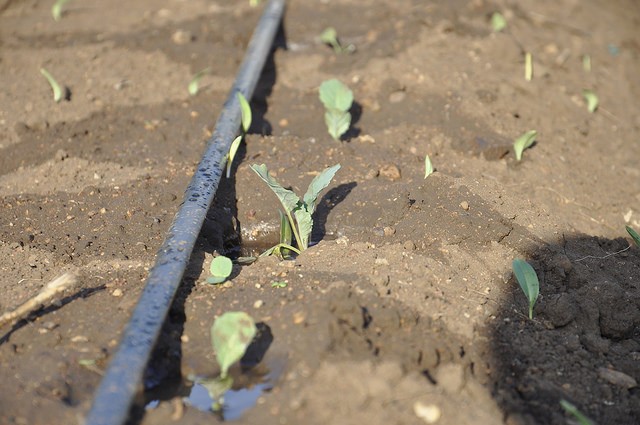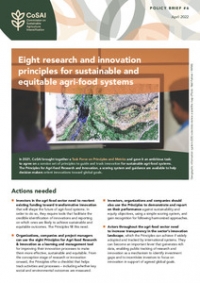This post was originally published on the International Food Policy Research Institute.
The draft outcome document from the Third International Conference on Financing for Development in Addis Ababa rightly mentions that efforts to end hunger and malnutrition need to be scaled up and that ecosystems need to be protected for the benefit of all. To do so, the document recommends establishing a new global forum to bridge the infrastructure gap and invest in sustainable and resilient infrastructure, including transport, energy, water and sanitation services.
Irrigation, however, is not mentioned at all.

This is surprising given the fact that small-scale irrigation is essential to meet future food and nutrition security, increase rural employment, adapt to climate change and reduce continued, rapid deforestation, particularly in Africa south of the Sahara.
As the latest report from the High Level Panel of Experts (HPLE) on water for food security and nutrition clearly states, reliable access to water for both domestic and productive uses is essential to reduce undernutrition in this region, where the vast majority of smallholder farmers still depend on rain-fed agriculture despite high seasonal and inter-annual rainfall variability.
Yields for both crops and livestock have stagnated or grown only slowly for decades; as a result, net food imports of basic staple foods have increased rapidly in order to feed the growing population. Climate change and continued population growth are expected to exacerbate food and nutrition security challenges in the region moving forward, adversely affecting progress towards reducing undernutrition.
Essential and profitable
Irrigation has many other roles beyond ensuring stable and increased food production under more variable climate. In a recent IFPRI Discussion Paper, author Laia Domènech identifies four potential impact pathways linking irrigation to positive nutrition outcomes in Africa:
Irrigation as a source of more diverse foods (through increased agricultural productivity and crop diversification);
Irrigation as a source of income (from market sales and employment generation, particularly in the lean season);
Irrigation as a source of water supply, sanitation, and hygiene (through multiple water use, reducing environmental enteropathy), and
Irrigation as an entry point for women’s empowerment (through increased asset ownership and control over resources and reduced time spent on water collection).
Investing in irrigation is not only essential, it is also profitable. In Africa south of the Sahara, the potential is largest for small-scale irrigation which can be fit more flexibly into many different settings while irrigation supported by large dams is important in arid areas.
For instance, a total capital investment of US$12.7 billion per year through the year 2050 could profitably develop up to 24 million hectares (ha) of irrigated agricultural land in the region without depleting water resources, up from about eight million ha in 2010.
The time for investment is now: the region’s population deserves access to water for productive uses in order to increase food and nutrition security, increase resilience in the face of growing climate variability, and conserve remaining forested areas.













Comments
your essay applies to C GIAR funding as well--water management research will not be given much priority in the next crps